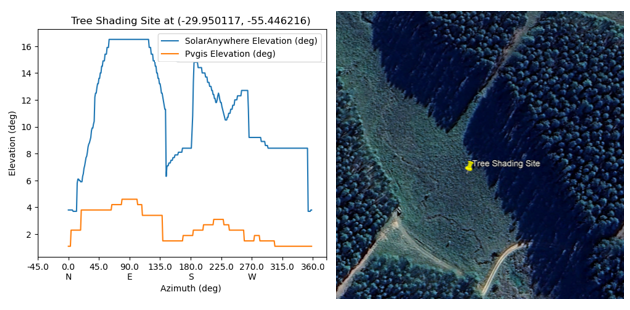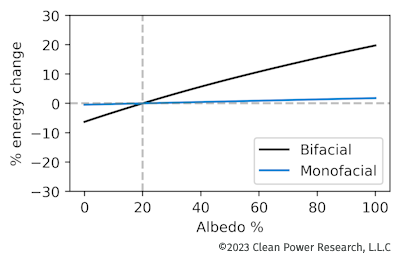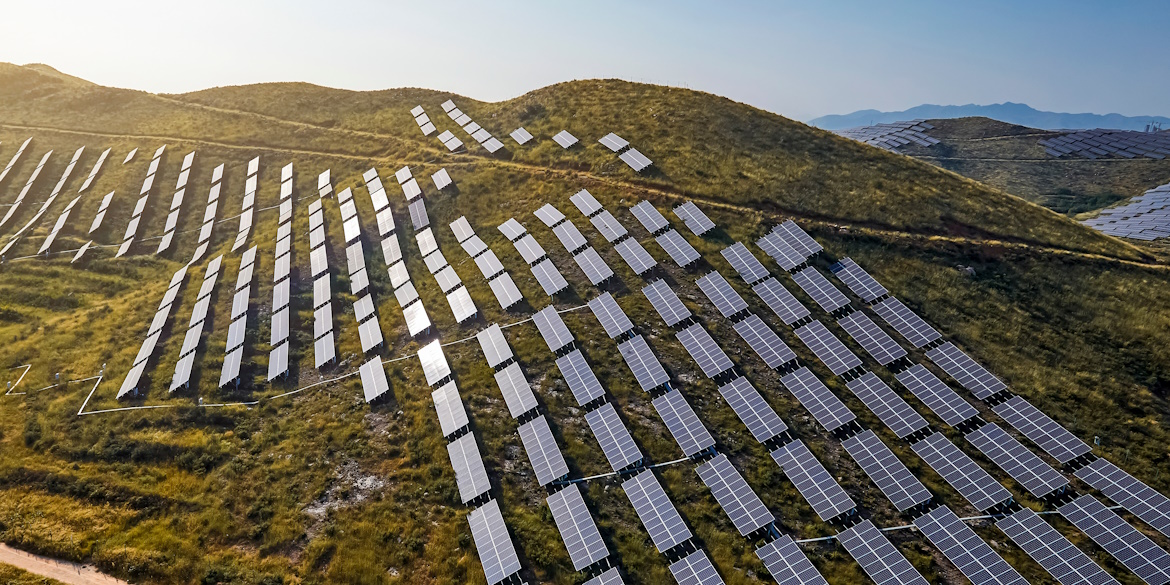Globally, the cumulative installed capacity of solar PV is set to triple by 2027, accounting for nearly 22% of total power capacity. With this rapid expansion and growth of solar in diverse geographical and climatic regions, solar stakeholders now face unprecedented risks to expected PV generation. For example, in June 2023, Canadian wildfire smoke reduced solar power output in parts of the Northeast U.S by more than half. Solar PV output intermittency induced by wildfire smoke can happen at a much faster timescale than that from clouds, causing grid and frequency instability. A study by Clean Power Research concluded that wildfires now rival cloud cover as a production risk for some projects in North America.
Meanwhile, solar generation is increasingly being installed in locations with complex terrain and proximity to hills, mountains or canyons. At such locations, nearby topographical features such as valley walls or hills can block solar irradiance from reaching PV panels, and the effect can be more pronounced during the early and late hours of the day. These irradiance and PV output losses are commonly referred to as far-horizon shading losses, and can range anywhere from less than 1% in estuarine wetlands to more than 12% in evergreen forests.
To address these uncertainties, Clean Power Research is pleased to announce the global launch of SolarAnywhere® version 3.7 (V3.7). Advancements with the new model version incorporate high-resolution terrain shading data and more accurate power simulations, including bifacial project modeling. SolarAnywhere V3.7 introduces the following new features:
- Industry-first, high-resolution (30m) far-horizon shading data – Accurately assess shading losses in complex terrain; available globally
- Time-series albedo data in PV simulations – Fine-tune PV simulations, including bifacial PV modeling, with more precise albedo data
- Updated particulate matter (PM2.5) data – Improve soiling loss modeling during extreme weather events such as wildfires
- Improved, easy-to-use API documentation – Seamlessly view, test and integrate the SolarAnywhere API using the Postman platform
- Updated typical year (TMY) datasets – Rely on typical year files that now include 2022 data and are generated from 25 years of data —exceeding the average power purchase agreement (PPA) term
Far-horizon shading data
SolarAnywhere users can now access high-resolution far-horizon shading data at 30-meter (1 arc-second) nominal native resolution at any location across the globe, for no additional cost. Far-horizon shading data is available on-demand from the SolarAnywhere website, or via the API.
SolarAnywhere far-shading loss information can be input into third-party PV modeling programs to make PV energy estimates more site-specific and improve accuracy, especially at locations with undulating terrain. What’s more, far-shading data also accounts for the effect of near-objects such as trees, buildings, etc., in addition to obstructions farther out on the horizon. Figure 1 shows how SolarAnywhere captures shading due to nearby obstructions when compared with PVGIS data at a site in Brazil.

To learn more about far-horizon shading losses and watch a video that describes how terrain-shading impacts PV yield, visit the Support Center.
Incorporation of time-series albedo data in SolarAnywhere bifacial PV modeling
SolarAnywhere offers albedo data (in V3.5 and newer) to support PV system modeling. Figure 2 shows how albedo can affect the output of PV systems.
Figure 2: Sensitivity of PV output to surface albedo using SolarAnywhere albedo data and pvlib Infinite-Sheds bifacial model

The impact of albedo is particularly pronounced for bifacial PV systems, which are projected to capture up to 80% of global market share by 2031. To address the need for easy-to-access, on-demand bifacial PV modeling, the open-source pvlib Infinite Sheds model is now available in the SolarAnywhere API.
Now, with the launch of V3.7, SolarAnywhere API users can easily leverage SolarAnywhere time-series albedo data with PV simulations, including bifacial PV systems, to reduce the uncertainty of their PV estimates. Visit the Support Center for SolarAnywhere albedo data and bifacial PV modeling to learn more.
Updated particulate matter data for soiling loss modeling during wildfires
In a study evaluating the impact of various environmental and meteorological parameters on PV soiling, NREL found that particulate matter (PM) data—primarily PM10 and PM2.5—has the highest correlation with soiling losses. To make soiling loss estimates more site-specific and data-driven, SolarAnywhere offers particulate matter data (PM10, PM2.5) with V3.5 and newer data model versions, as well as the pvlib Humboldt State University (HSU) soiling loss model in the SolarAnywhere API.
To make soiling loss estimates more accurate, particularly during wildfire events, the PM2.5 equation has been freshly updated in V3.7 and higher as per guidelines from NASA MERRA-2. This update addresses situations where PM2.5 exceeded PM10 during wildfire events.
To learn how SolarAnywhere can be used to model the effect of extreme weather events, including wildfires and snowstorms, see the webinar: Wildfires and Extreme Weather: Quantifying Impacts and Risks with Improved Perfrmance Benchmarking.
New, improved API documentation
SolarAnywhere API documentation is now available through the Postman API Platform. The updated, user-friendly documentation makes it easier than ever for users with limited or no prior experience in programming to use the SolarAnywhere API for programmatic, on-demand access to SolarAnywhere data and services.
Data accuracy improvements
This year’s release adds 2022 to the V3.7 Typical Year (TMY) dataset, which now includes 25 years of data. A long period of record reduces uncertainty and confirms the consistency of the SolarAnywhere model across many years and multiple generations of satellites. Inclusion of the latest year also ensures the latest weather trends are reflected.
Our validation is freshly updated through the year 2022 and includes 1,175 site-years of validation, globally. In addition, we’ve now included a new section in our validation that shows model skill across the globe based on the Koppen climate classification. To learn more, check out our updated model validation documentation.
How to access SolarAnywhere Data
SolarAnywhere V3.7 is available to all new and existing users on commercial licenses at no additional cost. In addition, V3.7 datasets are available via SolarAnywhere Public for more than 30 locations around the globe free of charge.
To learn more about SolarAnywhere V3.7, please visit the links below:
